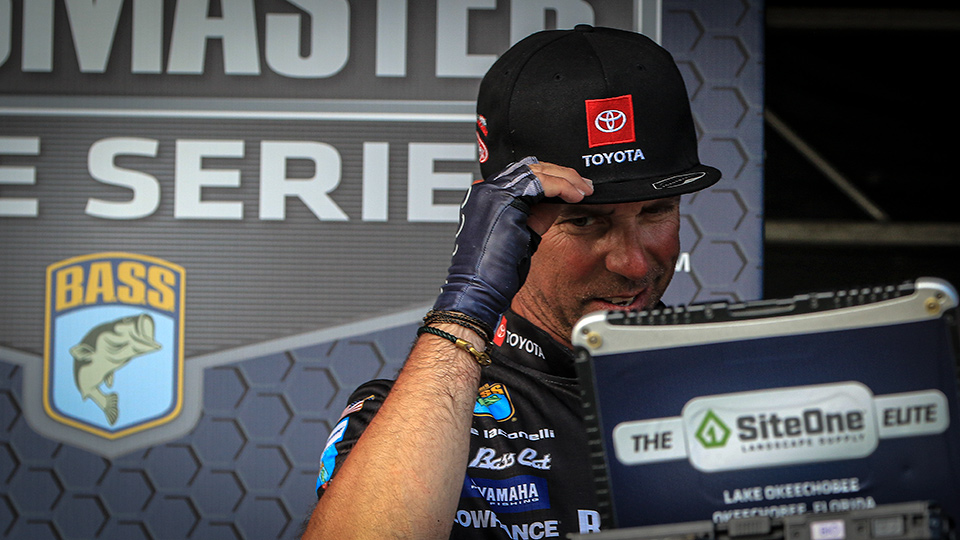
On any given fishery, all of the bass never do the same thing at the same time during the spawning phase. They come to the bank to spawn in waves.
Part of this is nature’s way of ensuring that at least some of the bass manage to spawn successfully. Say, that all of the bass were spawning at the same time and a massive release at the dam sucked the beds dry. The entire spawn for that year would be lost.
Since the bass come to the bank in waves, some of them would spawn before or after such a catastrophic event.
Another reason nature directs bass to spawn in waves is that the prime nesting areas may be limited. Spawning in waves allows the bass to share the most productive bedding habitat.
Water temperature waves
Because different parts of a lake heat up quicker, the bass to come to the bank sooner in some places than others. I divide a lake into thirds, especially with reservoirs.
Bass traditionally spawn earlier in the upper third of a lake. That’s mainly because this section has shallow, protected flats.
The middle section of a lake is not as shallow as the headwaters and usually warms a little later. The last bass to spawn live in the lower third of the lake where the deepest water is the last to warm up.
What I love about fishing during the spawning phase is that I’m not pigeonholed regarding how I have to fish. You can almost choose what you prefer to do.
If you like to sight fish for spawners, the bass will be on the beds in one of the three sections of the lake. One of those three sections will also have prespawn or postspawn bass, so you can fish the phase of the spawn that suits your strength.
Prespawn bass
I can catch spawning bass by sight fishing for them, but I’m not good at it. I run away from those fish and search for prespawn bass. A lot of times they’ll be in the cooler, lower third of the lake.
I’ll go into coves and creeks and look for the last point or two that stick out just before I reach the shallow spawning area. This is where the prespawners will stage.
I love to crank those points with something that dives deep enough to deflect off the bottom. If the point is 5- to 6-feet deep, I’ll tie on a Rapala DT6. I go with a DT10 in depths to 9 feet.
This is not a one-and-done deal. You can catch multiple fish from one point. They’re almost always loaded up on a sweet spot. That could be a stump, a little patch of grass or a hard spot like a shell bed.
Spawning bass
Although I’m not good at sight fishing for spawners, I feel confidence doing what I call “blind bed fishing,” mainly in the upper third of a lake. The water is often too dingy there to see a bass on a bed.
I slip into protected coves and target isolated pieces of cover, like a single dock, stump or stick. If there are lily pads, reeds or some other type of vegetation, I cast to holes and indentations in the grass.
My favorite bait for blind bed fishing is Berkley’s 5-inch Powerbait The General or Maxscent The General. I wacky rig it with a VMC No. 2 Wacky Neko Hook that has a weedguard.
I throw it anyplace I think there might be a bed and don’t do a thing with it. I’ll let it sit there for as long as 50 seconds before twitching it. You have to play a mind game and imagine that there’s a bass there on a bed.
Postspawn bass
When the bass in the lower end of a lake are in a full-blown spawning mode, there should be postspawn bass starting to move out of the shallows in the upper and middle sections. I locate them by looking for the first significant depth change coming out of a spawning pocket.
These places are easy to locate with digital mapping charts. With C-Map on my Lowrance units I color different depth contours to help me see where I’m mostly likely to find postspawners.
I shade 0 to 2 feet in green, 2 to 4 feet in yellow and 5 to 10 feet in red. Anything in red marks the first significant depth change I’m looking for.
I target isolated cover and points in this zone. Some of the productive points will be the same ones I would fish for prespawn bass.
When the bass are done spawning, forage species like shad, herring and bluegills go into their spawning mode. This is my favorite time to fish a topwater bait.
That could be a walking bait, prop bait, popper or buzzbait. The best option depends on the lake you’re fishing.
Then again, there’s something about a popper that postspawn bass love. It’s a great imitation of a spawning bluegill.
You can learn more about how I fish during the spawning phase and many other techniques at www.mikeiaconelli.com or www.youtube.com/c/goingike.





